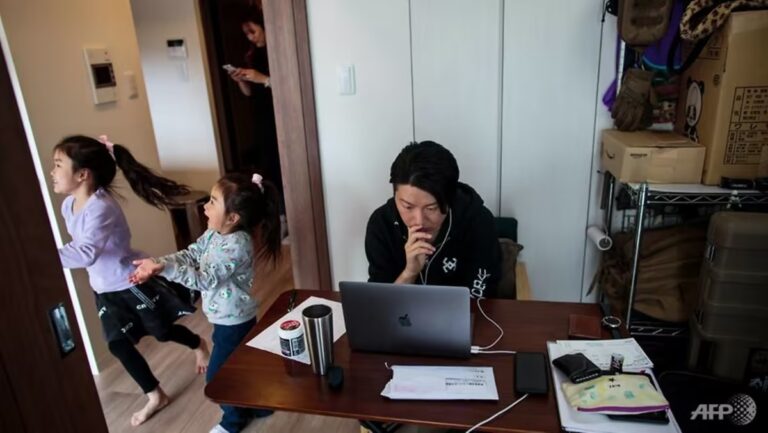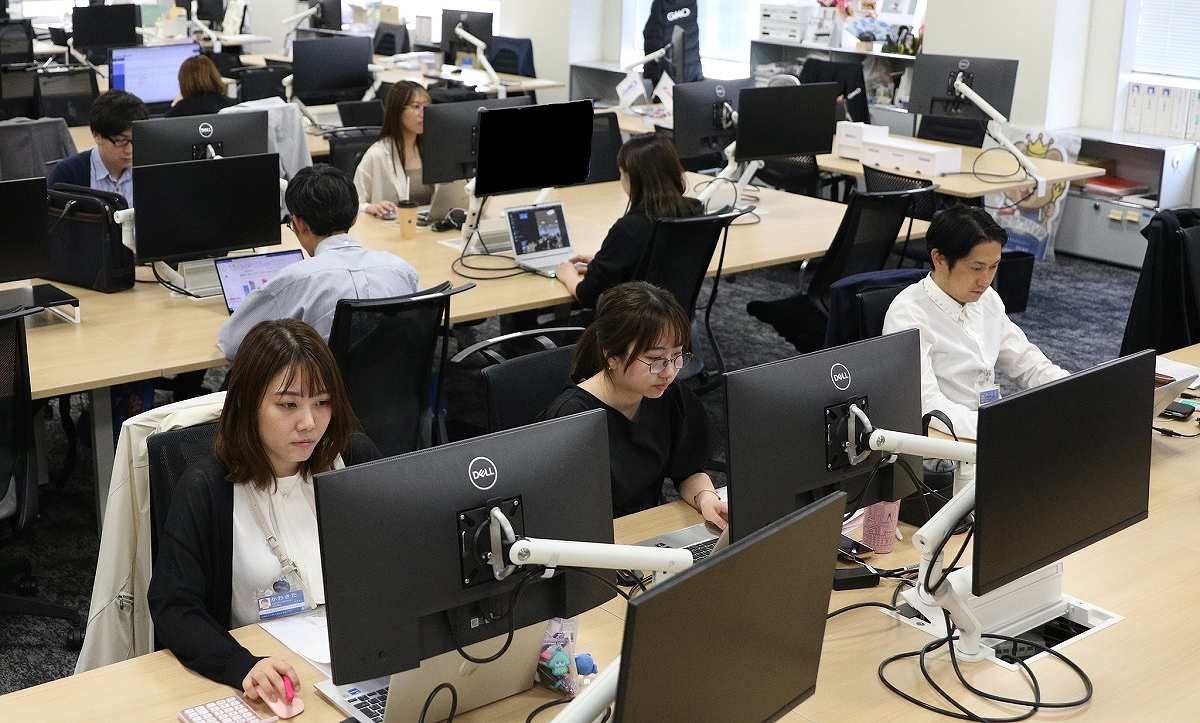
Countries around the world experienced the pandemic differently and Japan is no exception. Now that the pandemic is mostly over, what are the lasting implications for companies and workers in Japan. Can we expect to see Japanese domestic companies embrace remote technologies and give their staff more freedom and flexibility.
The Covid-19 pandemic may gradually be receding from the forefront of our minds but what have been the long-term implications for work in Japan. With the recent nature of the pandemic, its effects remain vivid in our memories, including both positive and negative experiences. I was working for an international company at the time and was one of the lucky ones who could move out of the office and into my home for work. Within my company there was less worry about how to police attendance and more emphasis on working securely and protecting company data.
My husband and I have a home in a small town in Shizuoka prefecture, so we immediately headed out of our house in Yokohama to a less populated area for our remote work experience. My company quickly got the technology in place for online meetings, chat, and other work essentials. The Human Resources department tried for the first six months or so to rally everyone to keep up motivation but after a while, when it looked like work-from-home (WFH) would become the new norm, they moved on to other topics. I never did set up a comfortable WFH space but made it through with repurposed dining chairs and miscellaneous tables. The company did provide all employees with a one-time payment to help cover expenses for new furniture, etc., which was quite generous considering many other companies made no allowance for the transition.
Work from Home in Japan
For traditional Japanese companies, the move to WFH had a few bumps in the road. Primarily, many companies did not have enough equipment or the infrastructure to move employees to a distributed work environment. Also, the practice of putting a ‘hanko’ or seal on documents for approval proved to be quite a hurdle for companies in the early days of the pandemic. Employees had to return to the office every few days to ensure that the paperwork continued to be processed.
According to Japan’s Ministry of Internal Affairs and Communications’ “Information and Communications White Paper,” the rate of companies in Japan adopting remote work was flat at about 10% between 2012 to 2017 and rose to 19.1% in 2018. Although adoption mainly took hold in larger sized companies, it is still less than 20%. According to a survey by Japan’s Ministry of Health, Labor and Welfare and LINE Corporation, when Covid began to spread in Japan, the implementation rate of remote work increased and reached 30% nationwide with over 50% in Tokyo. These surveys covered responses from individuals not companies, however, at the same time there was a significant decrease in commuter activity at stations that normally would have a lot of foot traffic during the weekdays. Many companies implemented remote work during Japan’s state of emergency (SoE), but the implementation rate declined after the SoE was lifted.
 Mid adult man using a laptop PC in room.
Mid adult man using a laptop PC in room.
Embracing Remote Work in Japan
To understand the constraints in Japan to have a full-scale adoption of work-from-home we need to look at a range of factors, there is no single answer. Research suggests that one significant barrier is attributed to household dynamics, particularly within families with children. Studies show that many couples still adhere to traditional gender roles when it comes to housework. Consequently, if the shift to work from home necessitates a redistribution of household responsibilities that conflicts with the entrenched roles, couples may encounter stress and opt to return to the office. Therefore, the degree to which household roles evolve in response to work-from-home arrangements can significantly impact the success and sustainability of new ways of working.
On the other hand, the demographic of the workforce is varied. For young workers just joining a company, getting the feel of the company culture and meeting people is vital and face-to-face time plays a significant role. Workers who have been with a company for a time, and have an established network, may feel less of a need to see coworkers in person daily.
Further research highlights several key obstacles to widespread adoption of work-from-home practices in Japan. These include availability of ‘limited-duty job-based employment,’ challenges in communication with colleagues and business partners, and inadequate computer and communication equipment along with sufficient operational guidelines for remote work.
When considering the transition to remote work, tasks that are abstract and cognitive in nature tend to be more compatible with WFH compared to routine office work involving physical labor. However, in Japan, the prevalence of abstract tasks within the workforce is lower compared to other nations, and there is also less reliance on information and communication technologies (ICT) in day-to-day work activities. These factors together create a challenge in the widespread adoption of telework in Japan.
The limited adoption of remote work in Japan is exacerbating disparities in work styles between individuals who can work flexibly and those who cannot. According to the Japan Household Panel Survey, comparing remote work rates by income group from February 2020 to April 2021 reveals a gap. The data shows that the remote work rate among the top 20% of earners surged significantly, increasing from 7% to 31%. In contrast, the rate among the bottom 20% of earners only saw a slight increase, rising from 6% to 8%.
Similarly, there is a notable disparity in the reduction of long working hours. The survey indicates a significant decrease in the percentage of individuals working 60 hours or more per week among higher-income groups. Additionally, the high-income group doubled the time spent on learning new skills during this period, while the middle and low-income groups showed no change in skill development efforts.
Personally, I would have thought that one of the major blockers to adapting work-from-home practices would have been the prevalence of small homes with little privacy, however, this did not show up in the research data. Perhaps the other considerations such as job content were more overwhelming than the space issue. May be once the job content issues are solved then the next layer of issues will appear.

Flight from Japan’s Big Cities
The pandemic gave many people time to think about their current living situations. For those in cramped apartments in crowded cities, they started investigating moves to smaller cities outside the metropolitan areas. The problem with living outside of the major cities wasn’t finding a place to live but finding a good company. Each year, only a few companies relocate outside the major urban areas.
However, there is a growing interest from both single workers and those with families to consider moving out of the city areas and to less populated areas such as Shizuoka and Gunma. These regions offer more open space, lower housing costs, and still have easy access to major cities via the shinkansen (bullet train). For workers who can arrange to visit the office only several times a month, relocating out of metropolitan areas may be a sensible option.
Prefectures like Saitama, Chiba, and Kanagawa, which are within an easier commute to Tokyo, are also popular destinations due to their lower housing prices. It looks like for the short term; some amount of office time will be required such as two or three days a week for both Japanese domestic and international companies. Overall, an all-remote work style is still an exception rather than a norm within Japan.
Japan’s Gig Economy
A look at the gig economy in Japan is useful as we consider the overall changes in work in the country. It’s no secret that Japan is facing a rapidly aging work force and a decrease in population. As Japan struggles to keep its economic position in the world, supplemental workers may be just the solution companies need.
Gig work can be loosely defined by short-term contracts or freelance work. Independent contractors, online platform workers, contract firm workers, on-call workers, and temporary workers are all included. Individuals provide services on a per-job basis, which provides flexible work hours but possibly less job security. Japan is no stranger to gig workers, mainly homemakers, students, construction workers, etc. filled these roles in previous years for supplemental income. These jobs usually included work in supermarkets and shops, restaurants and other services, manufacturing, and construction industries.
As technology advances, the availability of gig options has expanded significantly. Online platforms now provide a diverse range of job opportunities beyond traditional service-based roles. However, in Japan, gig workers face similar uncertainties as those in other countries. They often lack retirement benefits, receive lower pay, and may experience unexpected contract terminations. However, more skilled gig workers may see their pay rise in accordance with their expertise. Japan is still a traditional society and if you don’t work in a traditional job, transacting with banks and other conservative institutions can be more challenging.
As the gig economy grows, workers may need to lobby for more employment protections and benefits changes. The introduction of better legal norms and clearer guidelines for the rights and obligations of gig workers is necessary.















